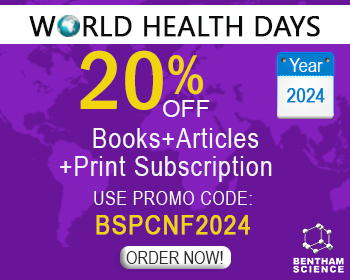Abstract
Understanding the molecular basis of drug action has been an important objective for pharmaceutical scientists. With the increasing speed of computers and the implementation of quantum chemistry methodologies, pharmacodynamic and pharmacokinetic problems have become more computationally tractable. Historically the former has been the focus of drug design, but within the last two decades efforts to understand the latter have increased. It takes about fifteen years and over $1 billion dollars for a drug to go from laboratory hit, through lead optimization, to final approval by the U.S. Food and Drug Administration. While the costs have increased substantially, the overall clinical success rate for a compound to emerge from clinical trials is approximately 10%. Most of the attrition rate can be traced to ADMET (absorption, distribution, metabolism, excretion, and toxicity) problems, which is a powerful impetus to study these issues at an earlier stage in drug discovery. Quantum mechanics offers pharmaceutical scientists the opportunity to investigate pharmacokinetic problems at the molecular level prior to laboratory preparation and testing. This review will provide a perspective on the use of quantum mechanics or a combination of quantum mechanics coupled with other classical methods in the pharmacokinetic phase of drug discovery. A brief overview of the essential features of theory will be discussed, and a few carefully selected examples will be given to highlight the computational methods.
Keywords: Quantum mechanics, predictive ADME, ADME/tox, ADMET, solubility, metabolism, elimination, toxicity, cytochrome P450, CYP isoenzymes, ab initio calculations, DFT, AM1, QM/MM, AMBER, CHARMM, MMFF, molecular mechanics, drug design, curcumin, curcumin derivatives, angiogenesis, angiogenic inhibitors.
Current Topics in Medicinal Chemistry
Title:A Perspective on Quantum Mechanics Calculations in ADMET Predictions
Volume: 13 Issue: 11
Author(s): J. Phillip Bowen and Osman F. Guner
Affiliation:
Keywords: Quantum mechanics, predictive ADME, ADME/tox, ADMET, solubility, metabolism, elimination, toxicity, cytochrome P450, CYP isoenzymes, ab initio calculations, DFT, AM1, QM/MM, AMBER, CHARMM, MMFF, molecular mechanics, drug design, curcumin, curcumin derivatives, angiogenesis, angiogenic inhibitors.
Abstract: Understanding the molecular basis of drug action has been an important objective for pharmaceutical scientists. With the increasing speed of computers and the implementation of quantum chemistry methodologies, pharmacodynamic and pharmacokinetic problems have become more computationally tractable. Historically the former has been the focus of drug design, but within the last two decades efforts to understand the latter have increased. It takes about fifteen years and over $1 billion dollars for a drug to go from laboratory hit, through lead optimization, to final approval by the U.S. Food and Drug Administration. While the costs have increased substantially, the overall clinical success rate for a compound to emerge from clinical trials is approximately 10%. Most of the attrition rate can be traced to ADMET (absorption, distribution, metabolism, excretion, and toxicity) problems, which is a powerful impetus to study these issues at an earlier stage in drug discovery. Quantum mechanics offers pharmaceutical scientists the opportunity to investigate pharmacokinetic problems at the molecular level prior to laboratory preparation and testing. This review will provide a perspective on the use of quantum mechanics or a combination of quantum mechanics coupled with other classical methods in the pharmacokinetic phase of drug discovery. A brief overview of the essential features of theory will be discussed, and a few carefully selected examples will be given to highlight the computational methods.
Export Options
About this article
Cite this article as:
Bowen Phillip J. and Guner F. Osman, A Perspective on Quantum Mechanics Calculations in ADMET Predictions, Current Topics in Medicinal Chemistry 2013; 13 (11) . https://dx.doi.org/10.2174/15680266113139990032
| DOI https://dx.doi.org/10.2174/15680266113139990032 |
Print ISSN 1568-0266 |
| Publisher Name Bentham Science Publisher |
Online ISSN 1873-4294 |
 31
31
- Author Guidelines
- Graphical Abstracts
- Fabricating and Stating False Information
- Research Misconduct
- Post Publication Discussions and Corrections
- Publishing Ethics and Rectitude
- Increase Visibility of Your Article
- Archiving Policies
- Peer Review Workflow
- Order Your Article Before Print
- Promote Your Article
- Manuscript Transfer Facility
- Editorial Policies
- Allegations from Whistleblowers
- Announcements
Related Articles
-
PEGylation: An Overview and Recent Advances Reported in the Patent Literature
Recent Patents on Chemical Engineering Clinical Utility of Biomarkers in Premature Atherosclerosis
Current Medicinal Chemistry Association of Admission Leukocyte Count with Clinical Outcomes in Acute Ischemic Stroke Patients Undergoing Intravenous Thrombolysis with Recombinant Tissue Plasminogen Activator
Current Neurovascular Research Role of Sympathetic Nerve Activity in Obesity, Hypertension and Metabolic Syndrome
Current Hypertension Reviews Plant Sterols and Stanols as Cholesterol-Lowering Ingredients in Functional Foods
Recent Patents on Food, Nutrition & Agriculture Smooth Muscle Cell Pathophysiology and Advanced Glycation End Products (AGEs)
Current Drug Targets Hyper-Coagulable Profile with Elevated Pro-Thrombotic Biomarkers and Increased Cerebro- and Cardio-Vascular Disease Risk Exist Among Healthy Dyslipidemic Women
Current Neurovascular Research Oxidative Stress and Mitochondrial Dysfunction in Type 2 Diabetes
Current Pharmaceutical Design Subject Index To Volume 13
Current Medicinal Chemistry Prevalence and Prognostic Value of Depression and Anxiety in Patients with Diabetic Foot Ulcers and Possibilities of their Treatment
Current Diabetes Reviews NMR Based Metabolomics: An Exquisite and Facile Method for Evaluating Therapeutic Efficacy and Screening Drug Toxicity
Current Topics in Medicinal Chemistry Left Ventricular Hypertrophy and Angiotensin II Receptor Blocking Agents
Current Medicinal Chemistry - Cardiovascular & Hematological Agents Cytokinin Nucleosides - Natural Compounds with a Unique Spectrum of Biological Activities
Current Topics in Medicinal Chemistry Novel Therapeutic Strategy in the Management of COPD: A Systems Medicine Approach
Current Medicinal Chemistry Role of Mammalian Target of Rapamycin in Atherosclerosis
Current Molecular Medicine Let Them Eat Cake
Current Nutrition & Food Science Radiation-Induced Extracranial Carotid Stenosis
Vascular Disease Prevention (Discontinued) Atrial Fibrillation Following Cardiac Surgery: Established and Emerging Strategies of Prevention
Recent Patents on Cardiovascular Drug Discovery The Metabolic Treatment of Patients with Coronary Artery Disease: Effects on Quality of Life and Effort Angina
Current Pharmaceutical Design Entrainment of the Human Circadian Clock to the Light-Dark Cycle and its Impact on Patients in the ICU and Nursing Home Settings
Current Pharmaceutical Design























